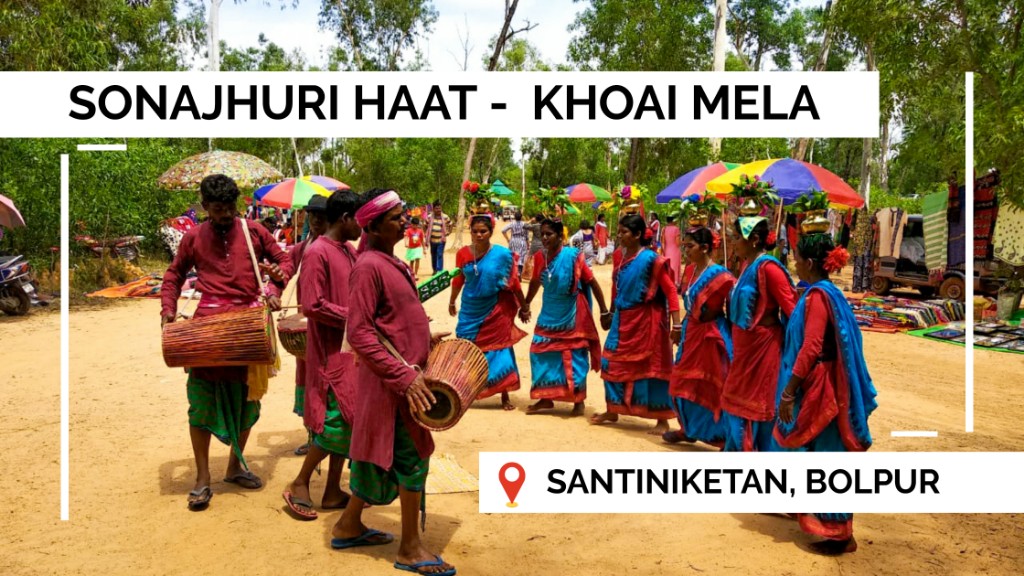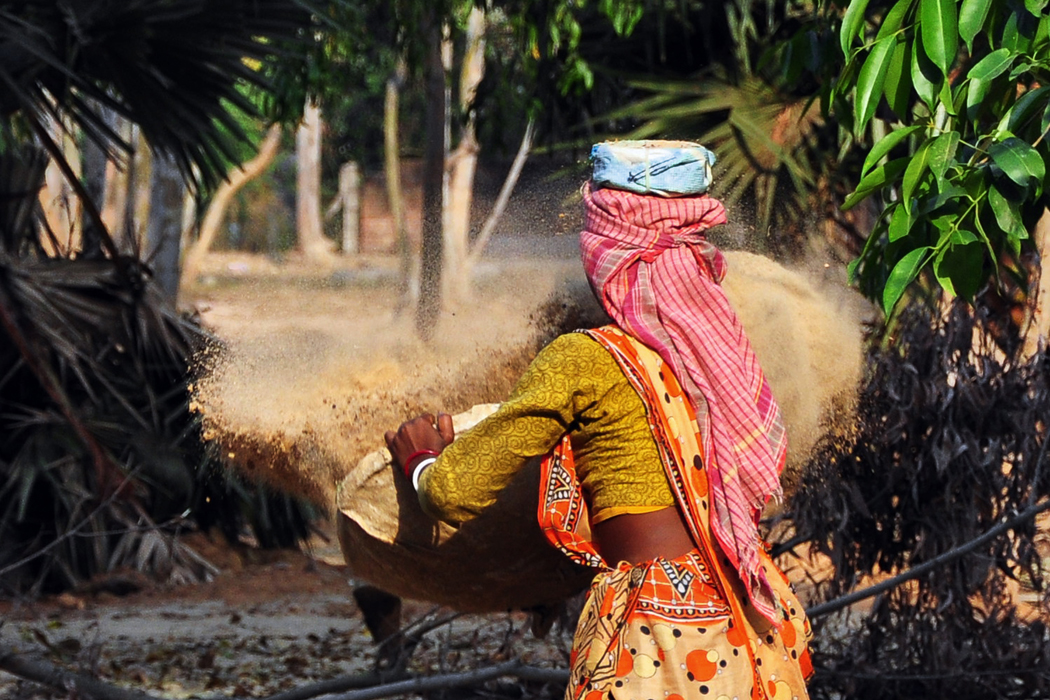Sonajhuri Haat: the artistic soul of Santiniketan
Sonajhuri Haat is not merely a marketplace; it is a weekend ritual that gathers rural craft, music and local food beneath the spreading canopies of Sonajhuri trees. Visiting the haat is to enter an archaeological layer of living practice centuries of skill, a present-day economy of craft and the persistent, wandering music of the Bauls. This guide takes you through the history, the stalls, the tastes, the people and the practicalities of visiting Sonajhuri Haat, with suggestions on how to pair the experience with a comfortable stay at The Pearl Club Resort.
Origins & history of how Sonajhuri Haat grew into a cultural destination
Markets beneath trees are common across rural Bengal, but Sonajhuri Haat has a particular resonance because of its proximity to Visva-Bharati and the creative community that gathered around Rabindranath Tagore. Over the twentieth century, students, artists and visiting scholars frequented the area; local artisans found a steady audience in those who valued objects made by hand. What began as a modest village trading spot grew into the structured weekend haat we know today which is a place where tribal and village artisans meet a curious, often international audience.
The haat’s location under Sonajhuri (often called 'sonajhuri' or 'khoai' trees) gives it a distinctive character: dappled sunlight, rustling leaves and a quietness that lets music and conversation be heard. That soundscape is one reason Sonajhuri Haat feels less like a tourist bazaar and more like a cultural conversation.
What you will find
Sonajhuri Haat’s stalls are a living catalogue of West Bengal’s rural crafts. Walking the haat, you will meet independent makers and small cooperative stalls arranged along forest paths. Below is a categorized guide so you know what to look for.
Textiles & Kantha
Kantha which is hand-stitched quilts, sarees, stoles and cushions are a core offering at Sonajhuri. Many stallholders bring fresh Kantha pieces stitched with local stories: animals, harvest scenes, miniature landscapes, and Tagore-inspired motifs. Look for dense running-stitch patterns and natural-dyed fabrics. You’ll find everything from small kantha scarves (easy to pack) to large quilts (excellent investments in design and utility).
Experience the colors, crafts, and spirit of Sonajhuri Haat
Dokra & metalwork
Dokra the ancient lost-wax brass casting practiced by tribal communities is well represented. Here you can find small animal figurines, ritual bells, decorative panels and even modern-style jewellery. Watch the artisans demonstrate the finish and ask about patinas. Authentic dokra has an earthy weight and irregularities that prove handwork; polished mass-produced items tend to look too uniform.
Terracotta & pottery
Local potters bring earthenware: small idols, ritual bowls, and playful animals. Terracotta items are often raw and unglazed, showing firing marks that are part of their charm. Ask potters where their clay is sourced and many are proud to describe the region and the firing method they use.
Batik, folk paintings & prints
Textile artists and painters display batik hangings, small canvas works and painted scrolls. Themes revolve around rural life, Tagore’s verse, Baul musicians and the Kopai landscape. Small framed works are easy to travel with and make meaningful souvenirs. If you buy paintings, ask whether the colours are water-based and about the artist’s background many sellers will tell a story about the motif.
Bamboo, cane & woodwork
Local cane and bamboo crafts range from practical baskets to decorative lamp shades and furniture accents. These stalls often show pieces with simple joinery and honest finishes; prices are reasonable if you’re willing to negotiate a fair margin.
Musical instruments & Baul paraphernalia
You’ll sometimes find makers who craft folk instruments such as ektara, dotara, khomok which are often the very instruments Baul players use. These instruments are sold in various price ranges: simple, playable models for tourists; and better-made instruments for musicians. If you’re curious, ask a Baul performer to demonstrate a note or two. That exchange is a highlight of many visitors’ trips.
Food & edible souvenirs
From jars of jhola gur (liquid jaggery) and local honey to pickles and spice blends, edible goods at Sonajhuri Haat are a delicious way to carry a piece of Santiniketan home. Vendors often let you taste sample spoonfuls but always ask before sampling. Fresh sweets like chaler pitha or patishapta may be available seasonally; these are best eaten on the spot.
Plan your visit pair Sonajhuri Haat with a comfortable stay. Reserve at The Pearl Club Resort
Art, music & the Baul presence
Baul music is a living wandering tradition, mystic songs accompanied by simple, resonant instruments. At Sonajhuri Haat, Baul performers transform the market’s pulse. Their presence is not a staged attraction but an organic thread in the haat’s tapestry: musicians gather under trees, sit among stalls, and sing for passers-by or for donations. The lyrics are often philosophical, the melodies hypnotic, and the instruments spare but the experience is deep. For many visitors the memory of a Baul’s voice beneath the Sonajhuri canopy is the defining sensory souvenir of Santiniketan.
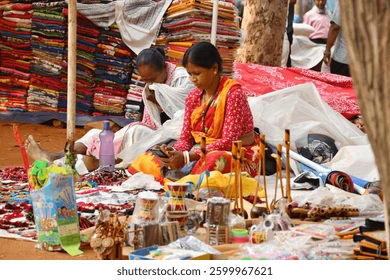
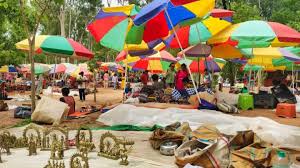
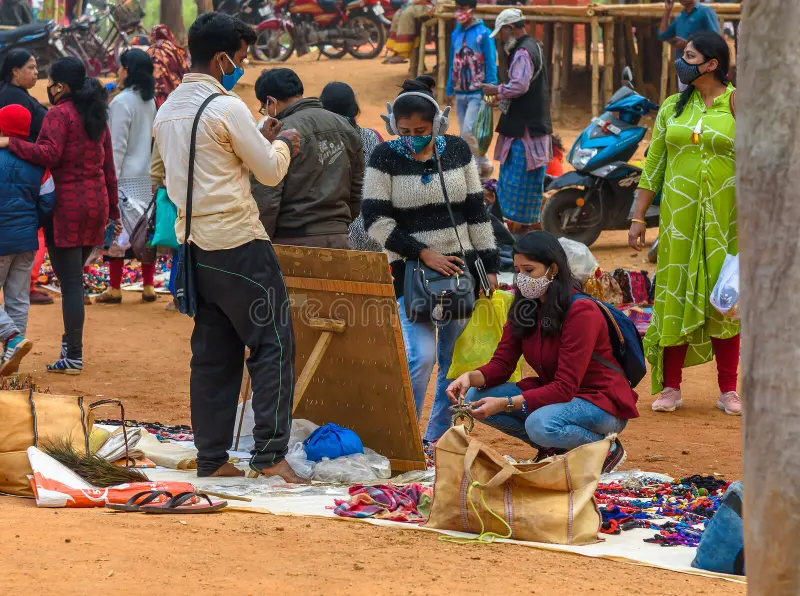
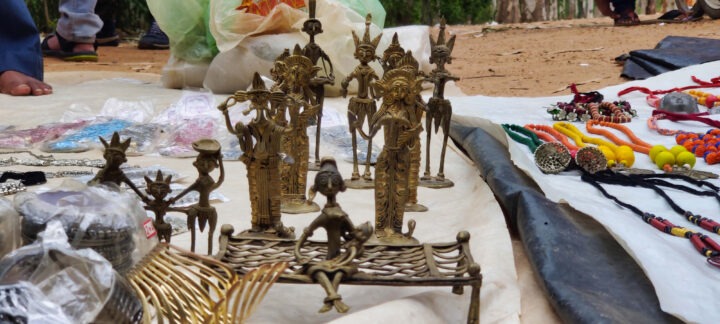
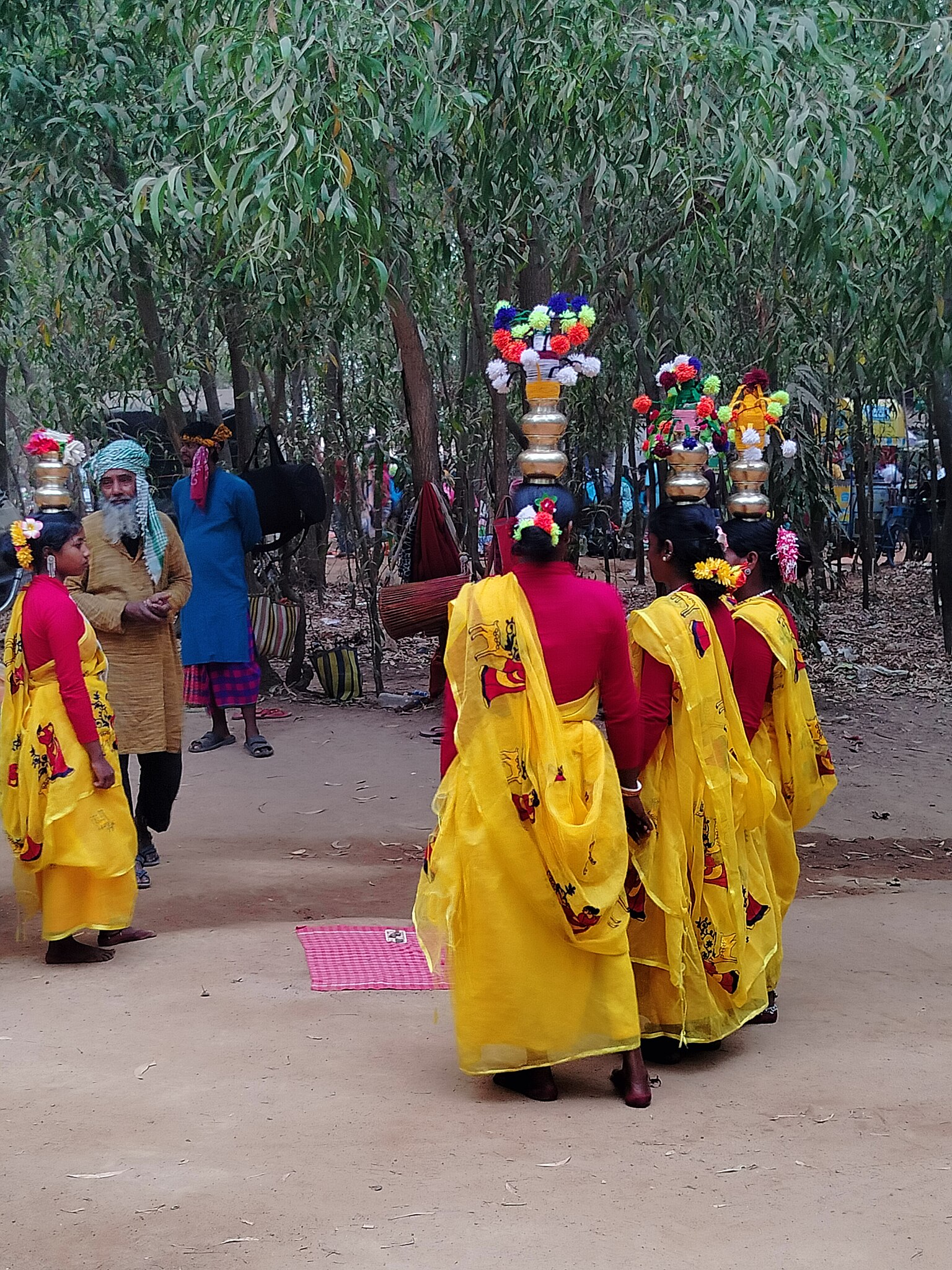
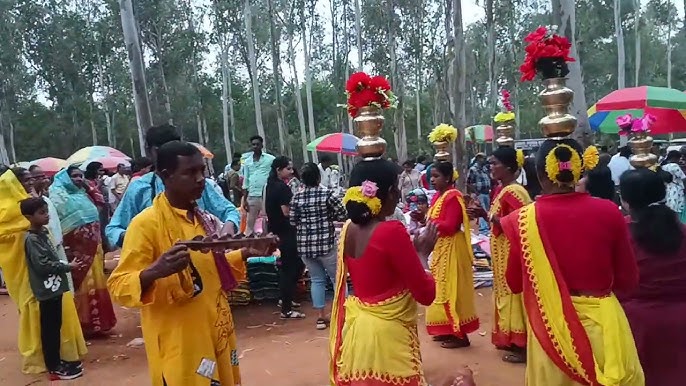
People & stories
One of Sonajhuri Haat’s greatest gifts is the opportunity to meet makers. Long-time vendors may have built decades-long relationships with repeat customers; young artisans often come to the haat to test new designs and connect with a wider audience. Here are a few types of encounters to look for:
- The elder potter who remembers the firing rituals of his village and will happily explain why a particular clay behaves the way it does.
- The Kantha stitcher who carries a bundle of days’ work and will show you the tiny stitches that accumulate into hours of narrative embroidery.
- The dokra family that brings cast pieces made with ancestral molds, proud of every imperfection that proves a piece was hand-made.
- The young painter whose work fuses Tagore-inspired motifs with contemporary colours often eager to trade a story for a sale.
When to visit: seasons, timings & festival peaks
Sonajhuri Haat is naturally strongest in winter: November through February offer crisp weather, dramatic light and the golden blossom of local trees. The haat is busiest on weekends and during festival periods of Poush Mela in December brings extra stalls and larger crowds, while Basanta Utsav in spring adds a colourful atmosphere. Early mornings are calmer and cooler (great for photographs), while late-morning to mid-afternoon is when the haat hums at its busiest tempo.
How to reach Sonajhuri Haat
By train: Bolpur Shantiniketan railway station is the main railhead. From there it’s a short auto or tuk-tuk ride to the Sonajhuri area and ask drivers for "Sonajhuri Haat" or "Khoai Haat".
By road: Santiniketan lies around 170–190 km from Kolkata; the drive takes roughly 3.5–4.5 hours depending on traffic. There are regular private taxis and bus services. If you have a hire car, parking near the haat is available but can be limited on busy days.
By air: The nearest commercial airports are Durgapur (Kazi Nazrul Islam Airport, ~60 km) and Kolkata (Netaji Subhas Chandra Bose International Airport, ~180 km). From either airport, book a taxi or take a prearranged transfer.
Tips for visiting
Cash first: Many stalls are cash-only or prefer small bills, so carry change. A few larger cooperative stalls may accept cards, but don’t rely on it.
Bargain gently: Bargaining is expected, but be fair. Consider the artisan’s time and materials; a polite negotiation that lands in the middle is best for everyone.
Ask before photographing: Ask permission before photographing artisans, performers (especially Bauls) or other visitors. Some artisans welcome photos and will gladly pose if asked.
Pack light and plan to walk: The haat spreads under trees along paths; comfortable shoes and a light bag will improve your day. If you buy heavy or oversized items, ask vendors about packaging or whether delivery can be arranged.
Food & flavours
The haat offers a range of snacks and seasonal sweets — from the crunchy spice of jhal muri to sticky, jaggery-based sweets like patishapta. Street cooks often make small fresh dishes: rice-pithas, seasonal fried snacks, and local tea offered in clay cups. Many visitors favour pacing their haat walk with intermittent snacks, using food breaks as chances to sit and listen to music while the market breathes around them.
Where to Eat Near Sonajhuri Haat
After exploring the colorful Sonajhuri Haat, you can enjoy delicious local meals and quick bites nearby. Here are some options:
- Ram Shyam Restaurant (View Location) – Known for its authentic Bengali thali with rice, dal, posto, sabji, chutney, papad, and payesh. A must-try for those wanting a traditional taste of Bengal.
- Shakuntala Restaurant (View Location) – Serves rustic, home-style Bengali meals often on brass plates. Cozy and simple, perfect for a soulful food experience.
- Sonajhuri Restaurant (View Location) – A multicuisine spot offering Bengali, Mughlai, Chinese, and Continental dishes. Good for family dining with variety.
- Roshnai Rannaghar (View Location) – Affordable eatery with veg thalis, biryani, fried chicken, pakoras, and snacks. Great for a quick bite before or after shopping.
- Sonajhuri Adda Restaurant (View Location) – Popular for tea, pakoras, samosas, and light snacks. A relaxed riverside vibe makes it ideal for unwinding in the evening.
Tip: Have a wholesome thali at Ram Shyam for lunch, then relax at Sonajhuri Adda with tea and pakoras while soaking in the Khoai landscape.
Where to stay
If you want to pair Sonajhuri Haat with a calm, carefully tended stay, The Pearl Club Resort is a natural choice. Located a short drive from the Visva-Bharati campus and Sonajhuri woods, the resort provides comfort and easy access to the haat. Below is a detailed look at rooms, experiences and why it’s a smart base for culture-focused travellers.
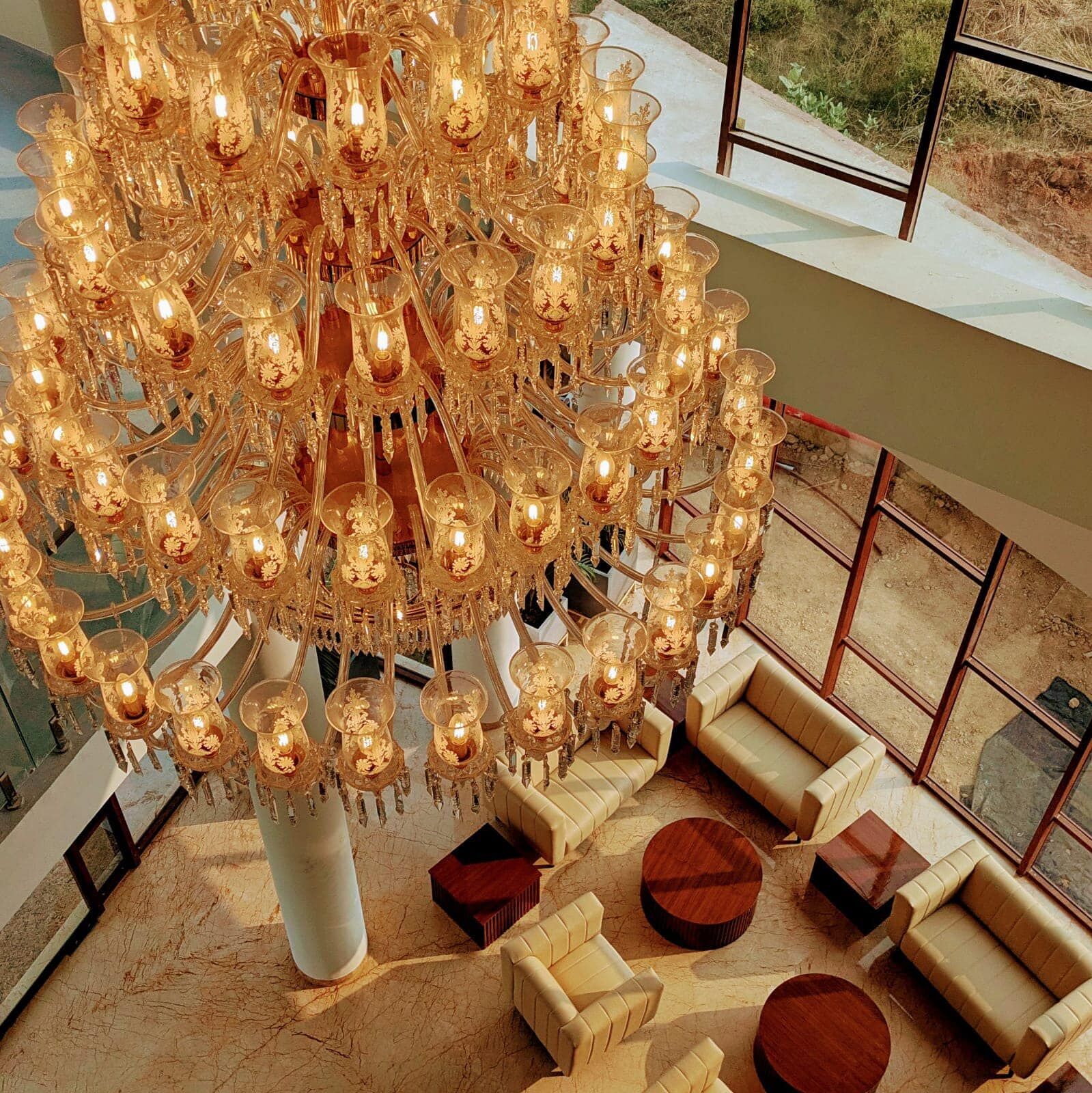
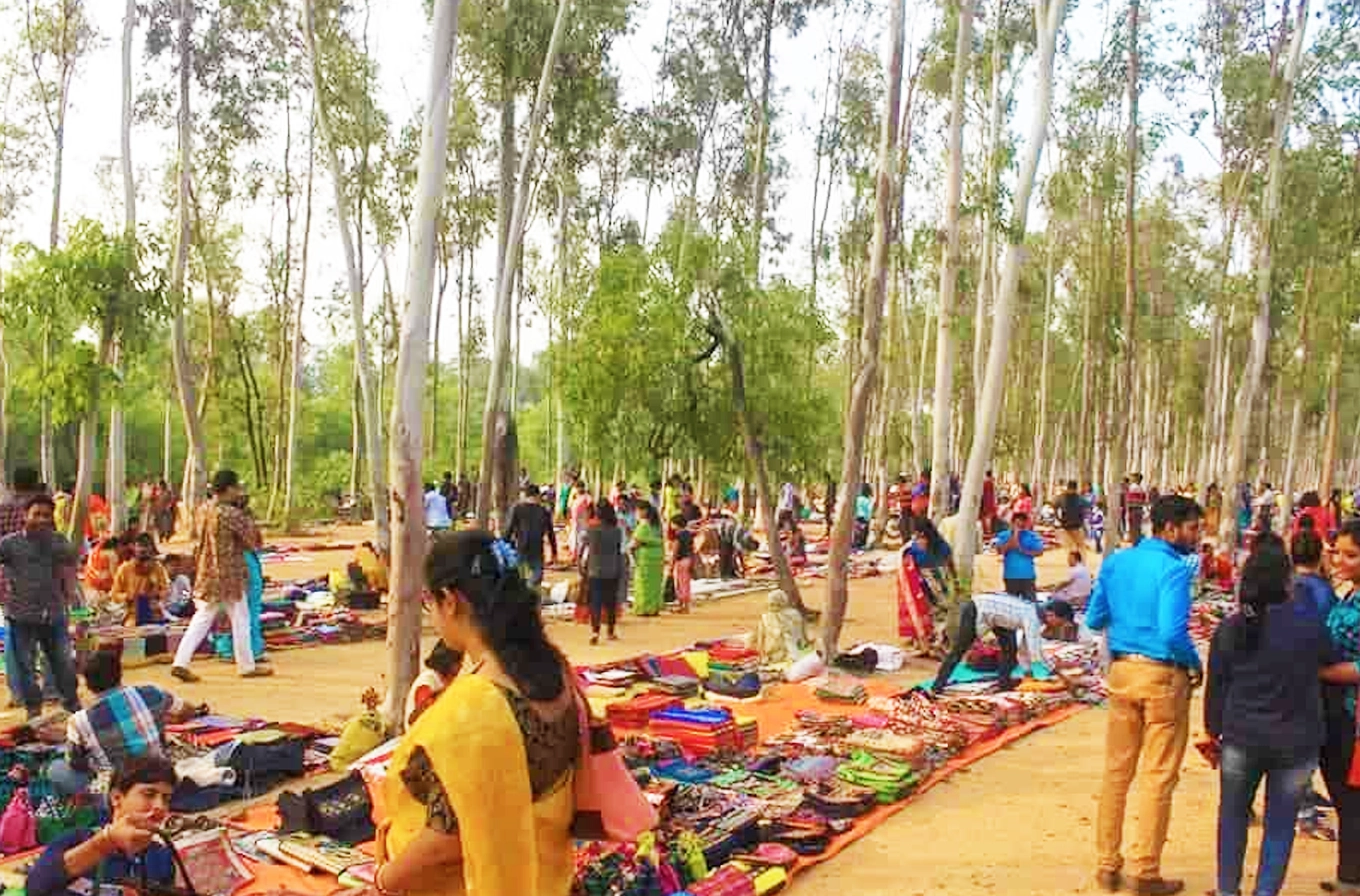

Rooms & bungalows
The resort offers a mix of deluxe rooms and private bungalows. Bungalows give families or groups private verandas and open courtyards where children can play and elders can rest.
Facilities
- Infinity pool for a cool end to a market day.
- Café and multi-cuisine restaurant serving local and pan-Indian dishes.
- Well-equipped gym, games room and small event spaces for cultural gatherings or private performances.
- Shuttle and concierge service to help plan haat visits, local tours and workshop bookings.
Sample itineraries (one-day, weekend, slow 3-day)
Here are practical itineraries built around Sonajhuri Haat and Santiniketan’s main attractions.
Half-day (tight schedule)
- Early morning: Walk the Visva-Bharati campus (Kala Bhavana & Patha Bhavana).
- Late morning: Arrive at Sonajhuri Haat; browse stalls, sample snacks.
- Afternoon: Riverside walk on the Kopai; return to your hotel for tea.
Two-day weekend
- Day 1 Arrive, check-in, Visva-Bharati campus, evening at Sonajhuri Haat.
- Day 2 Morning workshop (batik/kantha), lunch at a homestay, afternoon visit to Amar Kutir and Ballabhpur Sanctuary, evening return to the resort for a Baul performance.
Slow 3–4 day
- Day 1: Check-in, garden walk, restful evening and dinner at the resort.
- Day 2: Campus morning, haat in the afternoon, private Baul session at the resort in the evening.
- Day 3: Craft workshop, visit local temples and terracotta sites in the district, sunset at Kopai.
- Day 4: Dawn walk, late brunch, checkout and farewell picnic pack from the resort.
Responsible travel & how to give back
Support the haat ethically: prioritise direct purchases from artisans, ask about materials and provenance, and prefer cooperatives where fees go back to the community. Avoid single-use plastics, carry reusable bags and, when possible, book workshops that pay artisans directly. Small acts like buying a modest kantha, sharing an artisan's contact, or joining a paid demonstration — compound into long-term support for living craft economies.
Practical information: Transport, hours & safety
Hours: Weekends, generally late morning through afternoon. Exact opening times vary; ask locally if you want to arrive right when stalls open.
Safety: Sonajhuri Haat is family-friendly, but it is an outdoor market with uneven ground. Keep an eye on children and bring insect-repellent in warm months. Hydrate in summer and carry light rain protection in the monsoon months.
Frequently asked questions
- Is Sonajhuri Haat open every weekend?
- Yes, typically Saturday and Sunday, though the number and type of stalls can vary with season and weather.
- Can I ship large purchases?
- Some cooperative stalls offer shipping; for large furniture or heavy items, enquire about local transport services or the resort concierge’s assistance.
- Is bargaining appropriate?
- Yes bargain kindly. Ask the vendor about the materials and time invested, and aim for a fair midpoint.
- Can I attend workshops without staying at the resort?
- Often yes many crafts workshops accept day visitors, but pre-booking is recommended during busy seasons.
Local voices
Walking the haat you might meet a dokra family that has cast the same mold for three generations, or a young Kantha artist who learned embroidery at a local school and now draws fresh motifs inspired by the Kopai’s curves. These brief conversations are part of the haat’s value: each purchase becomes a story and every object a witness to time spent learning a trade.
Why Sonajhuri Haat will stay with you
Beyond the objects and the bargains, Sonajhuri Haat is about memory: a Baul’s fragment of song, the feel of a hand-stitched kantha in your palms, the smell of simmering jaggery and the sight of artisans shaping metal and clay. It is a place where making and listening are public acts, and where visitors step into a tradition still being lived. Leave a respectful footprint, carry a small memento, and the haat will return the gift of a morning, a story and a taste of Santiniketan.
